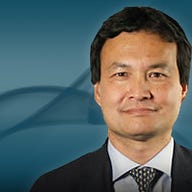Aust travel agency flies into thin air

So in August 2003 when Harvey World Travel (HWT) decided to upgrade the information technology systems servicing its franchisee travel agents, information technology manager Matthew Harris knew he would have to keep cost top-of-mind.
Harris faced a formidable task. He needed to ensure HWT's relatively thin technical support resources -- seven direct employees and a range of external consultants -- could support a rapidly-growing international franchise network. To date the group has 350 franchisees in Australia, 40 in New Zealand, 120 in South Africa, and has plans to surge from one franchise in the United Kingdom to 70 within nine months, and 170 after 21 months.
Deploying Harris' own staff around the world to fix problems would be "financially prohibitive and logistically impossible," he said.
After examining the options -- primarily variations on a client-server model, including use of third-party programs to assist in the rollout of applications -- HWT and Harris decided to eschew client-server and opted to "go thin" instead.
It was not the only retail travel agency chain to do so -- rival Flight Centre has also moved to thin-client computing, citing the need to quickly plug new agencies in while keeping administration, bandwidth and infrastructure costs low.
The HWT thin client solution -- employing Wyse thin client terminals, Acer flat-screens, and servers running a Windows 2003 operating system -- is the core of a AU$5 million-plus information technology upgrade, dubbed Hydra, designed to improve the efficiency, security, reliability and cost-effectiveness of the franchise outlets. The system -- which is delivering a range of applications to users via the terminals, including Office 2003, Galileo and Internet Explorer -- replaces a client-server architecture employing Windows Server 2000 and personal computers.
Harris said the name Hydra was chosen as the mythological nine-headed beast symbolised the project model of one server accommodating a number of users.
According to Harris, the project included supply of the latest Galileo travel software, Microsoft applications and upgraded firewalls to franchisee desktops. Apart from the operational improvements, he said the Acer flat screens and Wyse thin-client terminals being deployed would improve the look of the outlets. (In some instances, existing personal computers are being reused as thin-client terminals.) Initial feedback from sales staff was that they were experiencing increased reliability from the new solution.
HWT is deploying one Acer server per site; with about 120 installed so far, the group plans to purchase 15 on average per month for the next 18 months. While those purchased to date are the Acer Altos 301s, which are reaching their end of life, HWT is migrating to newer Altos 320s that feature both redundant hard drives and power supplies.
The rollout of thin-client terminals had been underway since June and is expected to be completed within the next 24 months, Harris said. About five sites per week are being migrated, with a total of 1,500 to 1,700 staff to shift in total.
After six months proving the prototype following the August 2003 decision, HWT undertook testing in labs and at live sites from January-February 2004. After a cautious examination to eliminate any bugs in the system, rollout was kicked off in June-July last year. With Australia and New Zealand franchisees being migrated at the moment, South African franchisees are scheduled to start moving from March-April.
While HWT had previously been approached by another thin client supplier, Citrix, to undertake a thin-client project, it was the advent of Windows 2003 Terminal Server (the latest iteration of Microsoft's server program that delivers the Windows desktop graphical user interface to user terminals that do not have that capability themselves) that really fuelled Harris' interest. "Terminal Services could do the job more than adequately at a significant cost reduction to Citrix and we felt that to be possible," he said.
The thin-client solution has so far resulted in savings of between 30 and 50 percent per outlet, which was "very popular with those who sign the cheques," Harris added.
The only issue HWT had, Harris said, was that certain legacy Java applications did not work with Terminal Services. These, he said, were "an inconvenience, not a showstopper" and tech staff were employing workarounds to ensure staff can get access to the information required.
However, Harris candidly admits the group's business partners -- most notably Galileo -- were initially less than thrilled by the decision and it took a leap of faith on HWT's part to proceed.
"We were very much market leading -- there was no-one else to go to who was doing exactly the same thing," Harris said. Galileo -- whose travel reservation software was critical to HWT's agents -- was among those that were "initially unsure of their ability to support us".
Harris said, however, that HWT had been vindicated as the thin-client solution had proven more flexible in allowing telecommuting in particular, as well as delivering the improved reliability.
The telecommuting issue was of particular concern to HWT as the workforce was highly mobile, he said. It was predominantly female, with very high incidences of maternity leave and working mothers. "[The solution] was very popular from a human resources point of view in that it created a more flexible working environment," he said.
Harris also needed to deliver a solution with a high level of up-time, as technical problems in HWT outlets would likely impact directly on customer service. With its previous client-server architecture, if a hard-drive failed, a technician would have to visit in with spare parts to rebuild the machine from scratch. The thin-client model, however, allowed the replacement of out-of-sorts equipment with the same ease that the Hydra re-grew a head that had been severed in battle. "With a thin-client solution, we use a rapid courier to send a new thin client terminal out to the site and the end-user plugs it in themselves," Harris said. "It means there's no need to do any sort of rebuild".